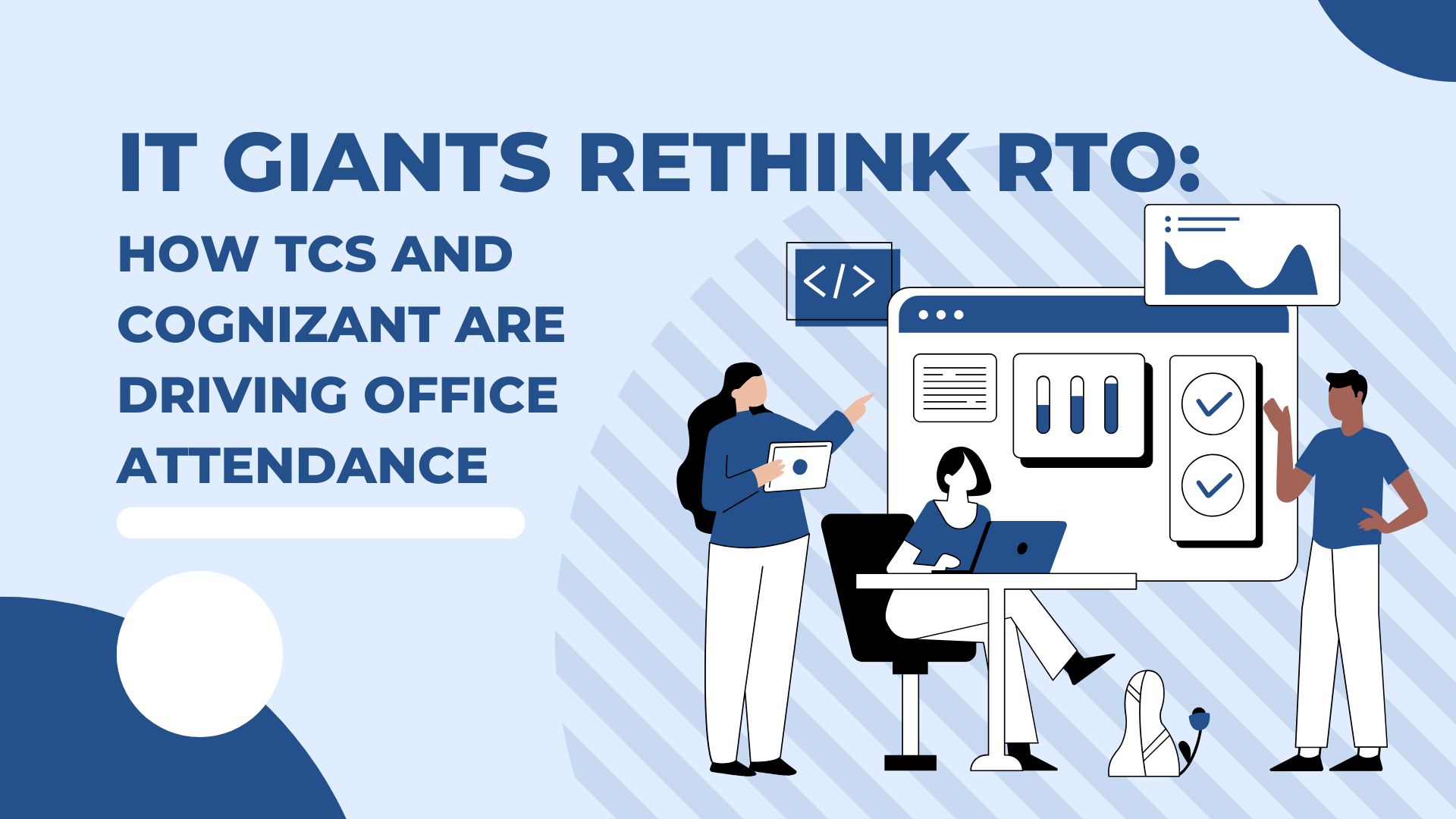The evolving dynamics of the workforce post-pandemic have compelled leading IT companies, such as TCS and Cognizant, among others, to rethink their office attendance strategies. The shift from remote work to hybrid or in-office setups has posed significant challenges in maintaining employee engagement and productivity. To address these challenges, these companies are adopting innovative methods supported by attendance software for remote workers. This blog examines the strategies IT firms are employing to promote office attendance, highlighting the crucial role of attendance software for remote workers in this transition.
Understanding the Shift in Workforce Dynamics
The pandemic sped up the shift to remote work, giving employees a level of flexibility never seen before. However, as companies like TCS and Cognizant plan their return-to-office initiatives, they face the task of balancing employee preferences with business needs. The role of attendance software for remote workers has become crucial in monitoring, managing, and optimizing workforce presence both remotely and onsite.
The Role of Attendance Software for Remote Workers
Attendance software for remote workers is designed to provide real-time tracking of employee work hours, presence, and productivity, regardless of location. By integrating these tools, IT companies can streamline attendance management, ensuring accurate monitoring without micromanaging. This approach helps maintain transparency and accountability, which is essential for encouraging office attendance without compromising employee autonomy.
Hybrid Work Models Backed by Attendance Software
Numerous IT companies are shifting to hybrid work arrangements, allowing employees to split their time between working from home and working in the office. Attendance software for remote workers enables smooth management of these schedules by allowing HR and team leaders to track who is working remotely and who is attending the office. This flexibility motivates employees to come to the office on scheduled days while continuing to reap the advantages of remote work.
Encouraging Office Attendance Through Incentives
Organizations such as TCS and Cognizant are introducing incentives linked to regular office attendance. These may include wellness programs, networking events, or onsite facility upgrades. Attendance software for remote workers provides data to help design these incentives effectively by identifying attendance patterns and employee preferences.
Addressing Employee Concerns with Transparency
One central concern employee has about returned to the office involves work-life balance and commute stress. Attendance software for remote workers offers transparent data on attendance and work hours, helping managers to address these concerns fairly. With clear insights, companies can implement flexible office attendance policies that accommodate individual needs while maintaining productivity.
Enhancing Collaboration Through Strategic Attendance Policies
IT companies emphasize collaboration, often more effective in person. Attendance software for remote workers helps coordinate team presence to maximize in-office cooperation and productivity. For example, teams can align their office days to enable brainstorming sessions or client meetings, fostering stronger teamwork and innovation.
Using Data Analytics to Improve Attendance Strategies
Attendance software for remote workers generates valuable data analytics on attendance trends and employee engagement. TCS, Cognizant, and other IT firms continually refine their office attendance policies using these insights. Data-driven decisions ensure that strategies remain relevant and responsive to the evolving needs of the workforce.
Addressing Challenges in Attendance Management
Despite technological advancements, managing attendance remains a complex task. IT companies face challenges such as ensuring data privacy, avoiding over-surveillance, and striking a balance between autonomy and accountability. Attendance software for remote workers is designed to address these issues by providing secure, user-friendly platforms that respect employee privacy while enabling effective attendance tracking.
Leadership’s Role in Encouraging Office Attendance
Strong leadership is crucial in cultivating a culture that prioritizes office presence without imposing rigid mandates. By utilizing attendance software for remote workers, leaders can set examples, communicate transparently, and foster trust within their teams. This approach encourages voluntary office attendance motivated by engagement rather than obligation.
Training and Support for Effective Attendance Management
Implementing attendance software for remote workers requires training for HR teams and employees. IT companies invest in educating their workforce about the benefits and usage of these tools, reducing resistance and improving adoption rates. Proper support ensures that attendance management aligns with broader organizational goals.
Outlook: Flexible and Data-Driven Attendance Policies
The future of office attendance in IT firms will likely center on flexibility, supported by robust attendance software for remote workers. These tools will continue evolving with AI and predictive analytics, helping companies anticipate attendance needs and adjust policies proactively. Such advancements will empower firms to create environments where employees feel valued and motivated to attend the office as needed.
TCS, Cognizant, and other IT companies are navigating the complex landscape of office attendance by adopting innovative strategies underpinned by attendance software for remote workers. These solutions enable transparent, flexible, and data-driven management of workforce presence, striking a balance between employee preferences and organizational goals. As these companies refine their attendance policies, attendance software for remote workers will continue to be a vital component in fostering productive and engaged hybrid workforces.
Sources:


